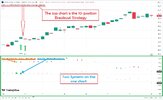- Joined
- 8 June 2008
- Posts
- 13,295
- Reactions
- 19,645
In my previous life pre covid as entrepreneur, only once have i seen my IP deliberately stolen, by a weight and scale international billion dollar company , a western oneunlike say Benjamin Franklin
having meet several times an inventor who successfully locked up his patents , stealing patents is not solely a Chinese thing , several G7 companies deliberately tried to steal/subvert his patents
after all the West happily stole several Chinese icons around the 1900's
in fact we still call fine porcelain ... china
but what makes you think the Chinese are simply copy-cats there is plenty of abandoned superior tech to be reinvigorated
So, a team of 2 guys, develop an innovative, not done before system, present it to the major player in the industry for a test, looking at collaboration, licensing etc, and they just rushed to their vietnamese in that case, programmer monkeys to copy the system.
They even dared asking us to send them the code to their Singapore office...for "testing"..rol..we did not and the bastards did never buy even a year licence, only a free month trial...repeated
On the other end, i have a dozen patents registered for work done during my startup in SZ period, and neither Huawei, Samsung or any other big players we were dealing with try any bastardy attempt.
I hope this overpriced billions scale and measure company dies and is replaced by a Chinese or even better their own Vietnamese subcontractor .
I would like go name the bastards but do not want to give trouble to Joe..or finding myself sued
Pm me if interested





